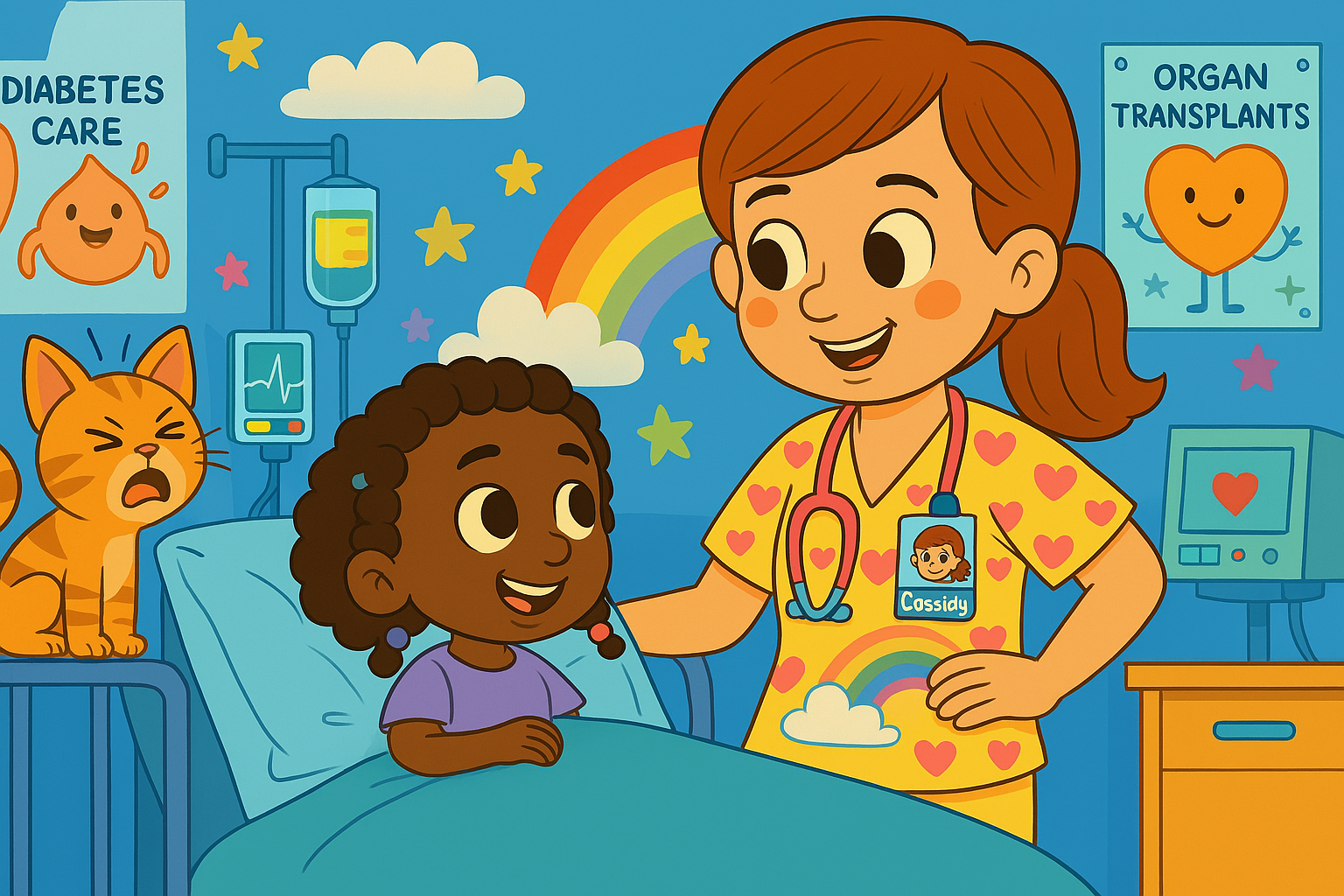Dexcom and Apple Watch are here and they bring iPad support
The Apple Watch arrives today and Dexcom has updated their apps to do more than just work on the watch...
This blog post is rather preliminary but important never-the-less because in addition to updating the Dexcom Share and Dexcom Follow apps to work with the new Apple Watch... Dexcom has also added iPad support - however you may not be able to find the apps on the app store without knowing this simple trick.
When you navigate, on your iPad, to the app store and search for Dexcom you won't receive any results - see below.
But if you change the drop down menu on the top left from iPad Only to iPhone Only you will - see below. This is because while the Dexcom Share2 and Follow apps do now work on iPad, they aren't designed (I hope Dexcom does eventually) for iPad. Meaning you will have to use the X2 button on the lower left of your iPad to upscale/enlarge the app to fit your iPad screen. Not the biggest problem, Instagram and many other apps are the same. Basically you are installing the iPhone app onto your iPad, a possibility that was blocked until the update happened.
So even if you aren't one of the people who are sitting by the front door waiting for their shiny new Apple Watch (Mine arrives in a few weeks and I will do a full review of the Dexcom app) this app update still brings some much needed iPad usability joy to your diabetes day.
Inspired by Conversation
I enjoyed having Kristina and Greg on my podcast so much that I asked them if they'd be interested in contributing a blog post to Arden's Day. It suffices to say that the topic Greg chose to write about warmed my heart! After you read his piece you can listen to their episode with the link below on iTunes, Stitcher or via the player that I've placed at the end of the blog post. Enjoy! - Scott
Time to Get More Aggressive!
Last week, my wife, Kristina, and I had the great pleasure of being featured on the 9th episode of the Juicebox podcast. It was a lot of fun and we both loved listening to it!
For parents of a child with type one diabetes, it’s fairly common for one parent to assume the majority of the diabetes management responsibilities. In our case, we pretty much split the duties (although, in full transparency, my wife does way more than I do!). We thought this would make for an interesting and entertaining discussion. When Kristina pitched the idea of an interview to Scott Benner at the Juicebox Podcast, it went like this….
“We'd love to be a part of one of your upcoming podcasts! Not sure if you've had any D-mom/D-dads reach out as a team to chat with you but we thought it might be fun. We have VERY different styles of managing Isabella's diabetes but it works.”
But, I’ll be honest; the podcast was completely Kristina’s idea and I really didn’t have much of a choice in the matter. My wife is extremely outgoing (understatement?) and jumps at the chance to speak in public forums. I, on the other hand, have always been a bit more reserved and would prefer to avoid being the center of attention, if possible.
So, for me, the thought of being interviewed is somewhat anxiety-inducing from the start and more so when my wife informs me that the interview very well may include some “newlywed style” questions to see how well we know each other. While I think know my wife very well (for years she has been preparing me for the off chance that we might someday appear on a famous live TV game show….I can’t count the number of times I’ve heard ”honey, remember this for when we’re on the game show!”), needless to say I started to get slightly nervous.
Kristina went first while I sat in the other room pretending as if I was completely calm, cool and collected and not at all anxious about the interview. All I could hear was Kristina’s muffled voice followed by her seemingly uncontrollable laughter, most likely telling one of her favorite “Greg stories.” Oh boy. Here we go…
It was finally my turn to join in on the fun. Scott immediately made me feel at ease; my nerves started to melt away and I actually started to enjoy myself. We spent quite a bit of time talking about the team-based approach that Kristina and I use for managing diabetes, which works very well for us.
While Kristina and I do act as a team, we have quite different approaches in the way we prefer to manage Isabella’s diabetes. Kristina tends to have a heavier hand with insulin (often generously “rounding up” carb counts), which helps to avoid highs. I, however, prefer to take a more conservative approach with insulin to avoid very low lows, especially overnight. The thought of what could happen to Isabella as a result of too much insulin absolutely terrifies me.
Scott seemed to be intrigued by the fact that we work as a team but with very different approaches. As a veteran type one diabetes parent, Scott shared some stories about his approach to managing diabetes. He talked about how technology, especially Arden’s Dexcom CGM, has enabled him to get comfortable with taking a very aggressive approach to insulin. This approach has led to very tight control (I still can’t believe Arden’s last A1C!).
This part of our talk really hit home.
While I’ve known that getting a bit more aggressive with insulin is likely to lead to better outcomes, I am completely terrified that I might kill my daughter with too much insulin. Our conversation helped me realize that I need to get over this fear. We have amazing technology at our disposal (including Isabella’s brand new Dexcom Share2, which is an amazing game-changer in my book!) that I can more fully leverage to help me get comfortable with becoming more aggressive with insulin, which will ultimately result in lower A1Cs, better overall control and a healthier little girl.
After finishing the interview, I believe one of the first things I said to Kristina was, “I’m gonna get more aggressive!”
It’s time to get over my fear. Thanks, Scott, for pushing me over the edge.
Greg Dooley
InspiredByIsabella.com
Dexcom Share2 Review and Overview
This may be the shortest yet most complete product review that I've ever done.
What is it?
The Dexcom Share2 Receiver is a continuous glucose monitor that has cloud sharing capability built-in.
What does that mean?
The Dexcom Platinum G4 is a glucose monitoring system. A sensor is placed under the skin. The sensor is in physical contact with a transmitter. The transmitter sends a signal to a receiver. The receiver shows your blood glucose value and trend arrows so you can see the direction and speed that your BG is moving.
The Share2 is an updated version of the Platinum G4 and is exactly the same as the G4 but with one huge addition... it has bluetooth. So now in addition to...
Sensor> Transmitter> Receiver
It can also be setup like this...
Sensor> Transmitter> Receiver> iPhone> Cloud> iPhone
The addition of bluetooth allows your iPhone (Android coming soon) to act as an uploader and that is how others, who you give permission to, are able to see the BG of the wearer. This is excellent for parents, caregivers or a friend that is willing to watch your BG while you have the flu.
Does it work?
In a word - yup. In more words, Yes it does and it works exactly as advertised. I now have access to Arden's CGM data on my iPhone 24/7 with the Dexcom Follow app. I see what she sees.
How do I get one?
All of the upgrade info that you need is contained here in my recent blog post. If you already purchased a Dexcom Share Cradle you will receive the new Share2 for free. Tons of other upgrade details are at the link.
What else do I need to know?
- Setup is a snap, you do not have to be a whiz with computers, apps, or phones to get the Share2 up and running. It took me maybe ten minutes to get Arden's working.
- For the moment it is iOS compatible but Dexcom promises Android by the end of 2015 (I bet it is much sooner).
- We don't see additional battery drain on our phones.
- No more getting out of bed to check a CGM!
- Sleepovers just got a whole lot easier...
- You need two iPhones (or an Internet connected iPods) to make the setup complete.
- Dexcom maintains the cloud, there is no charge for the service.
- I just posted a Juicebox podcast episode all about the Share2, the next generation G5 (Same cool cloud stuff but you won't need a receiver if you would rather use your phone to see your BGs).
- Where can I get the Share and Follow apps? On the iTunes Store. Be sure to get Share2 (Share was for the cradle).
If you have question please ask them in the comment section and I will do my best to answer them quickly.
Dexcom Share2 Unboxing Photos
High resolution images of the new Dexcom Share2 Receiver
Click to Enlarge...
My first-look review will be available early next week...
Wall Street Journal: Smartwatch App Helps Track Glucose
Not sure if you remember the recent Wall Street Journal article about Apple watch apps and Dexcom because it was behind WSJ's pay content protection (meaning you had to subscribe to read the entire article). I reached out to the author of the article and asked if I could have the text so those without a subscription could read it. She very kindly sent it to me. A huge thank you to Kate Linebaugh from the WSJ for supporting the diabetes community!
Dexcom Monitor Produces a Graph on Apple Watch
from the WSJ: Kate Linebaugh
DexCom Inc. is designing an app that will display readings from its diabetes glucose monitor on Apple Inc. ’s smartwatch, giving the watch an early foothold in the health-care market at a time when regulatory treatment of such systems has eased.
DexCom’s glucose monitor tracks a person’s blood-sugar levels continuously. The company has shown a picture of the app, which converts that data into a simple graph that is just a glance at the wrist away. It says the app is expected to be ready when the Apple Watch is launched in April.
Apple declined to comment. The company hasn’t accepted any apps for the coming watch yet but has provided guidelines and code to developers for creating apps for it. The latest iPhone operating system increased its health and fitness offerings.
Image from diaTribe's twitter feed - follow them @diaTribeNews
The Food and Drug Administration had been closely scrutinizing such applications. But the agency loosened its oversight in late January, months after a group of software engineers, many of whose children have Type 1 diabetes, developed a system for monitoring diabetes patients’ blood sugar over the Internet. The system was distributed without first getting regulatory approval.
The group’s effort challenged the slow pace of innovation and regulatory approval in the field. It also highlighted the growing role that Silicon Valley companies and software developers hope to have in monitoring and maintaining people’s health.
Some 29 million Americans have diabetes. Between 5% and 10% of them have Type 1, an autoimmune condition in which the body is unable to convert glucose into energy. People with Type 1 diabetes rely on taking insulin and regular monitoring to make sure their blood sugar doesn’t go dangerously high or low, both of which can cause life-threatening conditions.
The DexCom monitor uses a hair’s-width sensor under the skin to measure blood glucose levels every five minutes.
Previously, the FDA considered glucose monitors and any associated software to be Class III medical devices, meaning they received the highest level of regulatory scrutiny. But the spread of NightScout, the system developed by the group of software engineers, and DexCom’s submission of a separate iPhone app for review prompted the FDA to change course last month.
DexCom’s monitors will remain Class III devices, but software that helps display the data they produce on mobile devices or smartwatches now only needs to be registered with the FDA and doesn’t require prior marketing approval.
The FDA has been reassessing its health-apps policies. “We felt that the risks that the app imposed weren’t as high,” said Alberto Gutierrez, director of the FDA’s Office of In Vitro Diagnostics and Radiological Health.
The issue came to a head last year when the group of software engineers, working on their own time, developed NightScout, which met a critical need. The software takes data from a glucose monitor made by DexCom, mainly for Type 1 diabetes patients, and uploads it to the Internet. That allows parents—and caregivers—to keep track of their children’ blood sugar from afar via their cellphones, tablets and Pebble watches.
NightScout spread quickly to thousands of users who found each other on Facebook and Twitter . By bypassing the FDA, the system’s creators skipped a process that had snarled or deterred formal development of similar products by medical-device companies.
Last fall, the group did take the invention to the FDA. The agency’s new rules give NightScout a pathway to regulatory compliance, according to FDA officials.
DexCom still needs to make sure its Apple Watch app complies with FDA rules. But thanks to the rule change, it doesn’t need to get approval before bringing the app to market.
Steve Pacelli, DexCom’s head of strategy, said the regulatory nod for the iPhone app came in January, much faster than the company expected.






















































